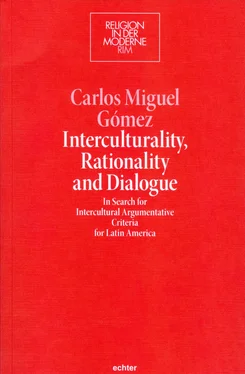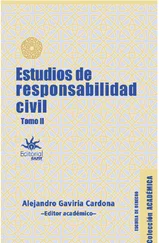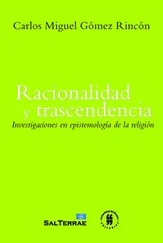Nonetheless, the state of mutual affectation between rival claims allows for developing normative argumentative criteria for dialogue that neither belong to only one tradition, nor are imposed on all. Moreover, this state of mutual interaction in which traditions are already immersed permits developing normative criteria that, contrary to what other theories of intercultural dialogue propose, do not rest on any supposedly common element shared by all (e.g. a universal form of rationality, some common moral values or principles, a notion of humanity, a common referent or reality, etc.). Rather they can be conceived as contextual and dialogical criteria. This means that they can be created to face particular contexts and problems to which dialogue has to respond; and that they may be derived from the very characteristics of dialogue as a particular form of communication suitable for the needs of a context.
In Chapter 3 we will develop an initial set of intercultural argumentative criteria based on the notion of intercultural reasonableness . These criteria allow us to identify some common argumentative moves ( intercultural fallacies ) that should be avoided and corrected, since they neither allow for the recognition of heterogenic positions in their own terms , nor grant them the opportunity to participate in dialogue. Accordingly, the criteria of intercultural reasonableness allow for a judgment over the way in which heterogenic reasons are used in dialogue and represent the conditions for a pluralistic model of argumentation; that is, an exchange of reasons in which it is both possible to use heterogenic forms of argumentation and to decide between them. However, even though these criteria represent a necessary condition for dialogue in Latin America, they are not yet sufficient.
In order to supplement them, Chapter 4 offers an analysis of the structure of the conflict between claims in Latin America. This analysis shows that on account of their conflicting claims, traditions are interconnected and interconnecting forces. The claims of one tradition are not neutral, unimportant to or unrelated with those of others, even if the ways in which the connections are established depend on the inner characteristics of each form of rationality and life project. Conflicting claims appeal to each other. This leads us to the notion of interpellation , which we develop in Chapter 5: when making their claims, traditions affect each other. This affectation, that is, what is done to others through what is claimed, can be analyzed at three clearly defined levels: in intercultural contexts rival claims (1) challenge each other, (2) demand something from the others, and (3) offer something to them. The way in which participants in dialogue respond to these three levels of interpellation can be evaluated by means of criteria that derive from the very state of conflictive interaction between traditions and make it possible to coordinate heterogenic reasons and actions. We will call these criteria openness, intercultural resonance, creative fidelity to a tradition, respect, solidarity, intercultural coherence and contextual relevance .
Finally, in the Conclusion, we will offer some reflections on how to justify our intercultural argumentative criteria and a few indications of their possible application. This will allow us to make some suggestions regarding the structure and process of intercultural dialogue as a poly-logical argumentative practice, as well as concerning its possible outcomes and limits. We hope this work can contribute to the clarification of some central theoretical problems of intercultural dialogue, and offer concrete insights for its practice in Latin America.
1Ian Hacking, “Language, Truth and Reason”, in Rationality and Relativism , ed. Martin Hollis and Steven Lukes (Oxford: Blackwell, 1982), 48-66.
PART I DIVERSITY AND THE CHALLENGES TO DIALOGUE
Конец ознакомительного фрагмента.
Текст предоставлен ООО «ЛитРес».
Прочитайте эту книгу целиком, купив полную легальную версию на ЛитРес.
Безопасно оплатить книгу можно банковской картой Visa, MasterCard, Maestro, со счета мобильного телефона, с платежного терминала, в салоне МТС или Связной, через PayPal, WebMoney, Яндекс.Деньги, QIWI Кошелек, бонусными картами или другим удобным Вам способом.












